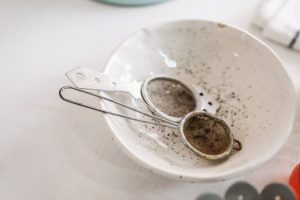Composting at Home: Turning Waste Into Garden Gold
Are you tired of throwing away your kitchen scraps and yard waste? Do you wish there was a way to turn that waste into nutrient-rich soil for your garden? Look no further than composting at home. Not only is it an environmentally-friendly way to dispose of waste, but it also provides a sustainable source of fertilizer for your plants. In this article, we will explore the benefits of composting at home and provide a step-by-step guide for turning your waste into garden gold.
The Benefits of Composting
Composting at home has numerous benefits, not only for your garden but also for the environment. Let’s take a closer look at some of the advantages of composting:
1. Reduce Waste
Every year, millions of tons of waste end up in landfills, taking up valuable space and producing harmful gases. By composting at home, you can divert a significant amount of waste away from landfills and reduce your carbon footprint.
2. Improve Soil Quality
Compost is a natural fertilizer and soil amendment that provides essential nutrients for plants to thrive. It also improves the soil structure, allowing for better water retention and aeration. By adding compost to your garden soil, you can create a healthy and vibrant environment for your plants.
3. Save Money
Adding store-bought fertilizers and amendments to your soil can quickly add up in cost. By making your compost at home, you can save money and still reap the benefits of a nutrient-rich soil for your garden.
4. Easy and Versatile
Composting is a simple and versatile process that can be done in a small backyard or even on a balcony using a compost bin. It can also be done on a larger scale, making it suitable for both urban and rural settings.
How to Compost at Home
Now that we’ve covered the benefits of composting let’s discuss how to do it in your own backyard. Follow these simple steps to turn your waste into garden gold:
Step 1: Choose a Compost Bin
The first step is to choose a compost bin that will suit your needs. There are several types of compost bins available, including traditional compost bins, tumbler bins, and worm bins. Choose one that will work best for your space and the amount of waste you plan to compost.
Step 2: Gather Your Materials
To create nutrient-rich compost, you will need a mixture of “brown” materials, such as dried leaves and twigs, and “green” materials, such as kitchen scraps and grass clippings. It’s essential to have a good balance of these materials to create the ideal compost environment.
Step 3: Layer Your Materials
Start by adding a layer of “brown” materials to the bottom of your compost bin, followed by a layer of “green” materials. Continue layering until you reach the top of your bin, making sure to add a layer of soil or finished compost every few layers to introduce beneficial microorganisms.
Step 4: Turn Your Compost Regularly
To speed up the decomposition process, it’s crucial to turn your compost regularly, typically once a week. This helps to aerate the compost and distribute moisture and microorganisms evenly.
Step 5: Use Your Compost
Depending on the composition of your materials and how often you turn your compost, it can take anywhere from a few weeks to a few months for your compost to be ready to use. Once it has a dark, crumbly texture and an earthy smell, it’s ready to be added to your garden soil.
Final Thoughts
Composting at home is a simple and effective way to turn your waste into a valuable resource for your garden. It benefits the environment, improves soil quality, and saves you money in the long run. So why not give it a try and see the results for yourself?
Remember, composting takes time and patience, but the end result is well worth the effort. Start small and experiment with different materials and techniques until you find a system that works best for you. Your plants and the planet will thank you.









